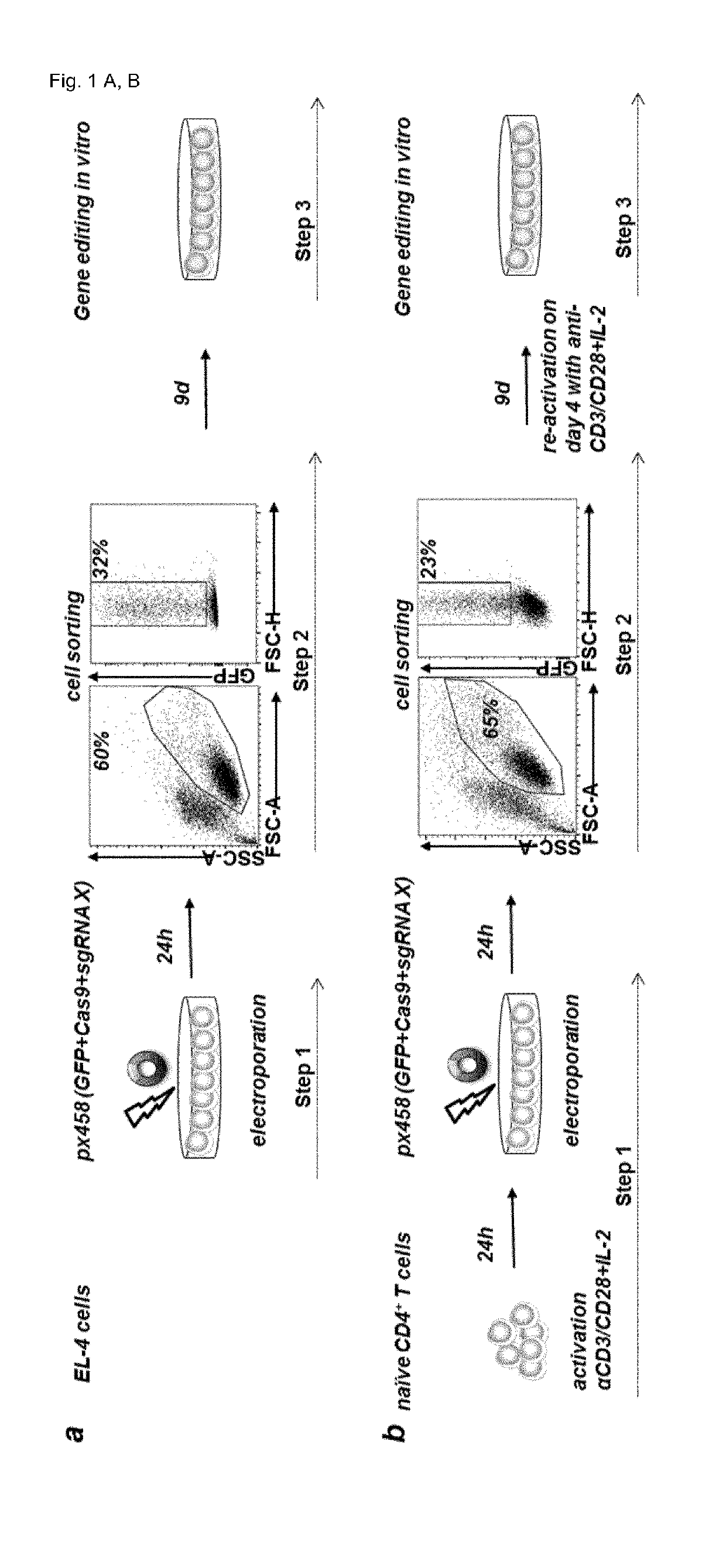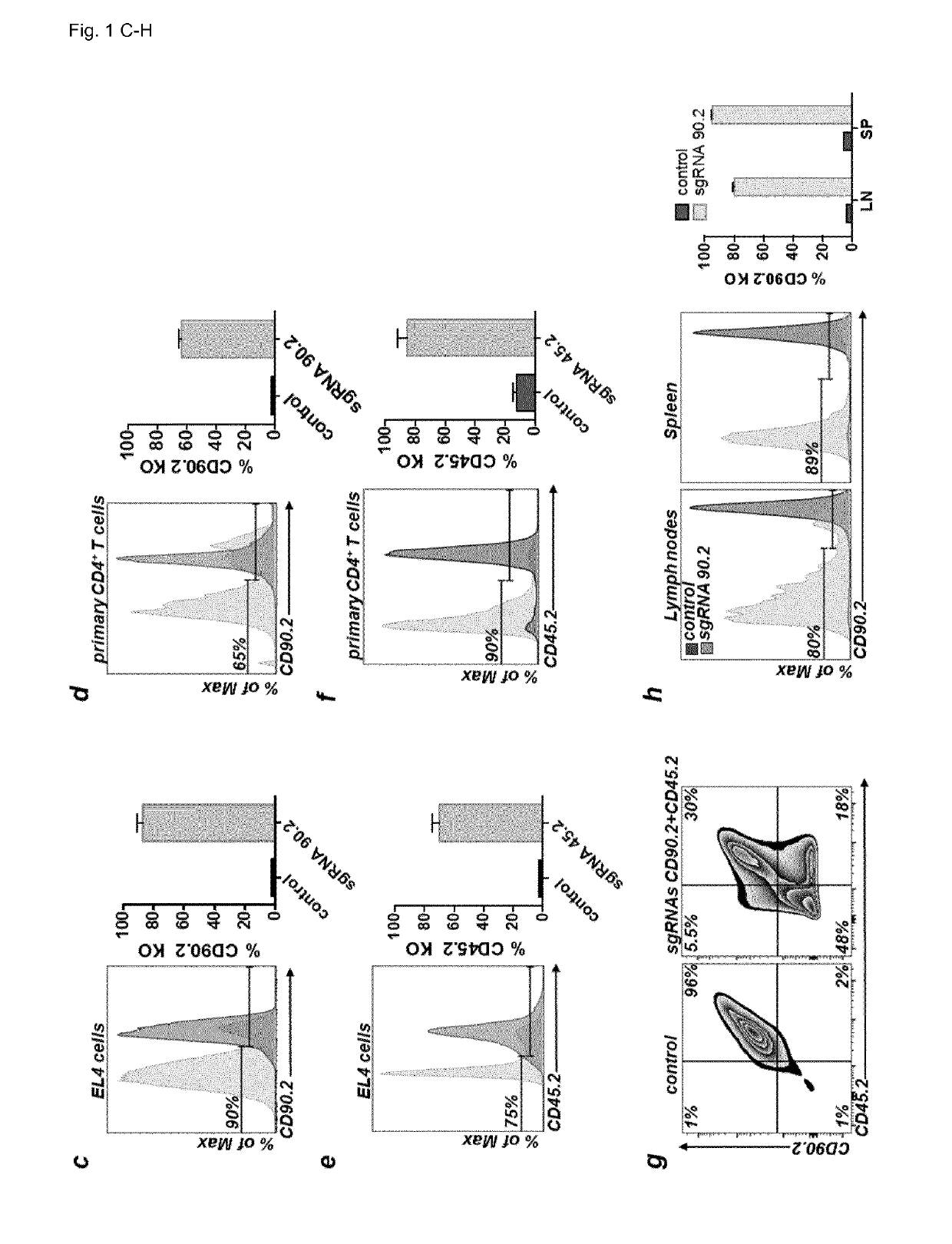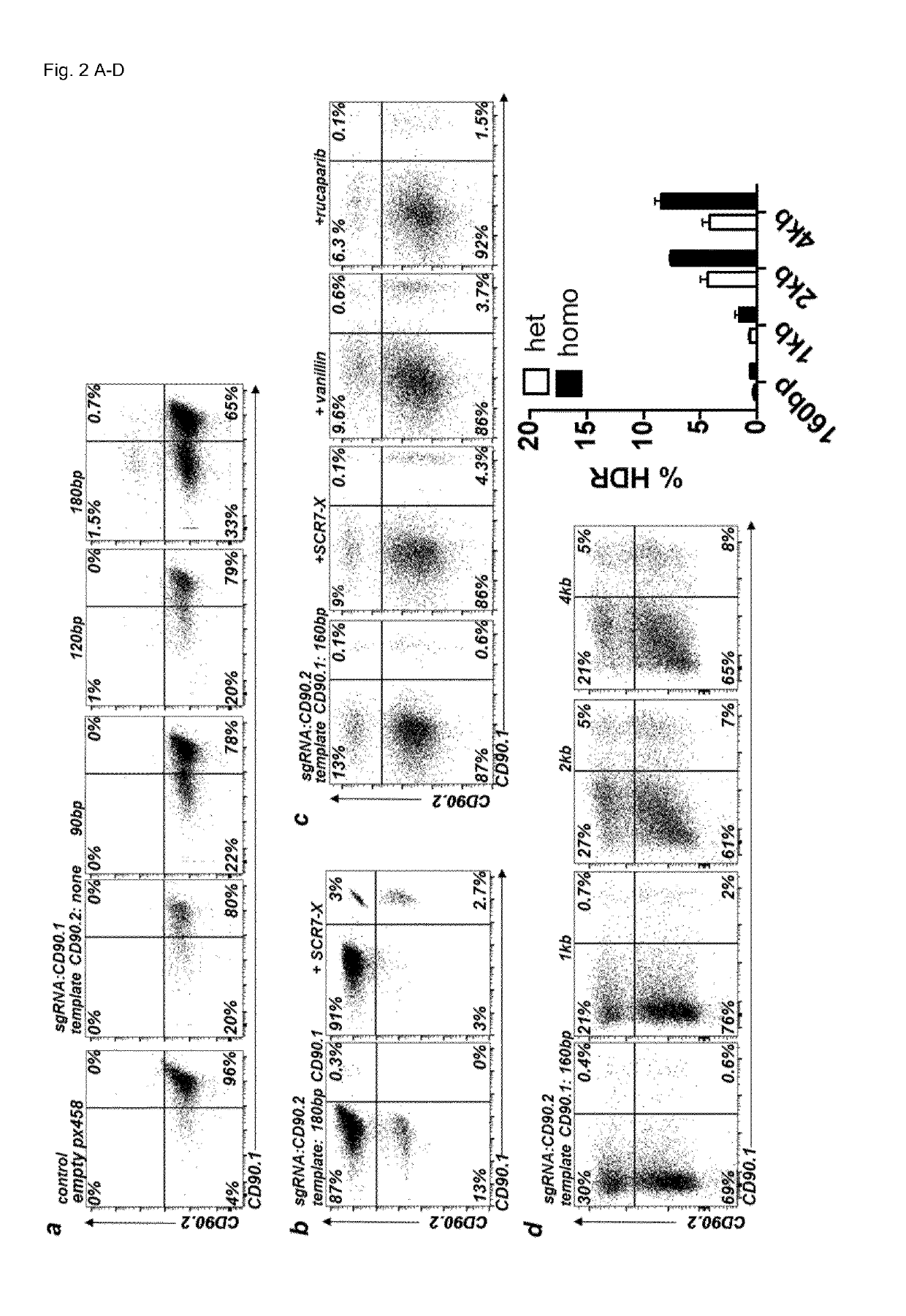Allele editing and applications thereof
- Summary
- Abstract
- Description
- Claims
- Application Information
AI Technical Summary
Benefits of technology
Problems solved by technology
Method used
Image
Examples
Embodiment Construction
Efficient Plasmid-Based Gene Ablation in Primary T Cells
[0205]Previous reports successfully used chemically modified guide RNAs (Hendel et al., Nat Biotech 33, 985-989, 2015) or Cas9 / sgRNA ribonucleoprotein (RNP) complexes for CRISPR / Cas9-mediated genome editing in human T cells (Schumann, PNAS 112 10437-10442, 2015). DNA based approaches were reported to work poorly if at all. However, many plasmids are waiting to be used if efficient protocols were available (Addgene.org / crispr). In contrast, only very few genome editing nucleases are available as recombinant proteins. Therefore, the inventors aimed to develop a plasmid-based genome editing approach in primary T cells. Based on a successful T cell electroporation protocol (Steiner et al., Immunity 35, 169-181, 2011), the inventors optimized experimental conditions for EL-4 and primary murine CD4+ T cells using a GFP expression plasmid (FIGS. 1A and 1B). The inventors quantified the efficiency of gene editing in single cells for ge...
PUM
| Property | Measurement | Unit |
|---|---|---|
| Surface | aaaaa | aaaaa |
| Antigenicity | aaaaa | aaaaa |
Abstract
Description
Claims
Application Information
 Login to View More
Login to View More - R&D
- Intellectual Property
- Life Sciences
- Materials
- Tech Scout
- Unparalleled Data Quality
- Higher Quality Content
- 60% Fewer Hallucinations
Browse by: Latest US Patents, China's latest patents, Technical Efficacy Thesaurus, Application Domain, Technology Topic, Popular Technical Reports.
© 2025 PatSnap. All rights reserved.Legal|Privacy policy|Modern Slavery Act Transparency Statement|Sitemap|About US| Contact US: help@patsnap.com



